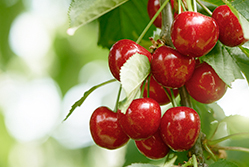Tackling Waste Reduction and Improvement With Lean Manufacturing Training
This course was eye-opening in that it helped pull back the veil on us not accepting waste and making a concerted effort to fix waste problems.
-- Bob Ferguson, Director of Michigan Plant Operations
Shoreline Fruit (www.shorelinefruit.com) is a grower-owned processor and marketer of dried fruits and cherry-inspired products. With 6,000 acres of orchards among a cooperative of growers, Shoreline Fruit harvests more than 25 million pounds of tart cherries annually. The cherries are dried or turned into cherry concentrate, juice, salsa or dietary supplements which are sold to the commercial, ingredient and export markets. The company also offers two retail lines: Cherry Bay Orchards and Cherry Bay Wellness. While cherries are the main business and product, the company also produces fruits including dried blueberries, cranberries and apples. Shoreline Fruit employs 145 at their Traverse City, Mich., location.
Challenge
Once a month after cleaning, Shoreline Fruit re-sets the system of conveyors attached to the fruit dryer. Poor set-up resulted in fruit tumbling over the guarding on the conveyors, which was not fixed until the next scheduled monthly maintenance. At the end of each 12-hour shift, the fallen fruit was weighed and thrown away. Bob Ferguson, Director of Michigan Plant Operations, valued the fruit loss at $125 per day, which equated to nearly $42,000 annually. Management wanted to prioritize waste reduction and improvement, not only in this area, but also in other parts of the facility.
Solution

To tackle this issue, a Team Leader in the dryer area of Shoreline Fruit attended Lean Manufacturing Champion training through the Michigan Manufacturing Technology Center – Northern Lower (The Center-Northern Lower). Shoreline Fruit learned how to apply the method of Plan-Do-Check-Adjust for continuous improvement and to address the fruit loss problem. After observing the process and understanding the current state, potential solutions were investigated.
One solution implemented by the engineering team was raising the plastic guards on the conveyors a few inches in order to prevent spillage over the side. The team made sure the new height still permitted employees access to the fruit if needed. Shoreline Fruit also utilized the 5S tool to create standard positioning and placement of the conveyors every time they were disassembled and reassembled after cleaning. This would help avoid any misalignment leading to fruit falling off the conveyors.
In addition to the fruit loss project, the company pursued a variety of other 5S and visual control initiatives, which ultimately helped to reduce volatility in material production.
Results
- Daily fruit clean-up time reduced by one hour
- Value of material (fruit) loss reduced by $125 per day, or $42,000 annually
- Daily product picking process time reduced from up to 60 minutes to five minutes
- Increased cycle count accuracy for packaging inventory from 96 to 99 percent